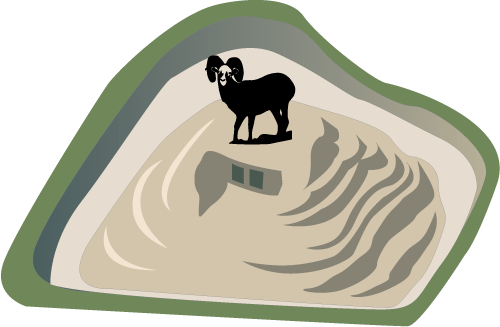Rocky Mountain Bighorn Sheep
Ovis canadensis canadensis
Scientific Name
Rocky Mountain Bighorn Sheep:
Ovis canadensis canadensis
Distribution and Habitat
Geographic Range
Reside in the western part of North America north to British Columbia and Saskatchewan, Canada and east to the Black hills of North Dakota, Nebraska, Colorado, and New Mexico.
Natural Habitat
Prefer fairly dry upland and mountain areas, often occupying the roughest and most precipitous parts there.
Physical Characteristics
-
The upper parts of the body are brown, fawn, or buff in color with light brown to white underparts. The rump is yellowish-white to white. Their body is stout, their nose is narrow, and their ears are small and pointed. The males have massive spiral horns, broad at the base. Females have only slightly curved horns approximately 4 inches long.
Quick Facts
-
In the late fall and early spring, older rams engage in combat for females. During these battles, they rush at one another and butt heads.
-
Rams live in bachelor groups and females live in herds with other females and their young rams.
-
They use ledges only 2 inches wide for footholds, and bounce from ledge to ledge over spans as wide as 20 feet.




